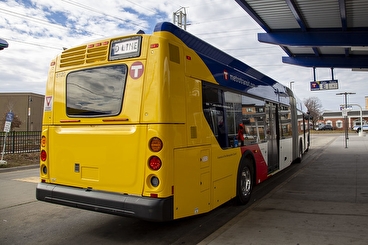About the study
Research from the Accessibility Observatory at the University of Minnesota ranks 49 of the 50 largest (by population) metropolitan areas in the United States for connecting workers with jobs via transit.
The new rankings, part of the Access Across America study that began in 2013, focus on accessibility, a measure that examines both land use and transportation systems. Accessibility measures how many destinations, such as jobs, can be reached in a given time.
“This project updates our detailed evaluation of access to jobs by transit,” said Andrew Owen, director of the Observatory. “Transit is an essential transportation service for many Americans, and we directly compare the accessibility performance of America’s largest metropolitan areas.”
The findings have a range of uses and implications. State departments of transportation, metropolitan planning organizations, and transit agencies can apply the evaluations to performance goals related to congestion, reliability, and sustainability. In addition, detailed accessibility evaluation can help in selecting between project alternatives and prioritizing investments.
The report—Access Across America: Transit 2015—presents detailed accessibility values for each of the 49 metropolitan areas, as well as detailed block-level color maps that illustrate the spatial patterns of accessibility within each area. New analysis of the data from the accessibility to jobs by transit rankings will continue to be published periodically.
The accessibility metrics presented in this report are designed to be comparable to those presented in the Accessibility Observatory’s earlier Access Across America: Auto 2015 report. “Taken together, these reports provide a comprehensive view of the relative accessibility impact of auto and transit systems across different cities,” Owen says.
For example, the Phoenix and Minneapolis–St. Paul metropolitan areas have effectively the same total number of jobs (1.7 million; ranked 13th and 14th respectively), and their auto accessibility rankings are also very close—13th and 12th. “However, they differ significantly in their transit accessibility rankings: Minneapolis–St. Paul ranks 12th in transit access to jobs, while Phoenix ranks 22nd,” Owen said.

